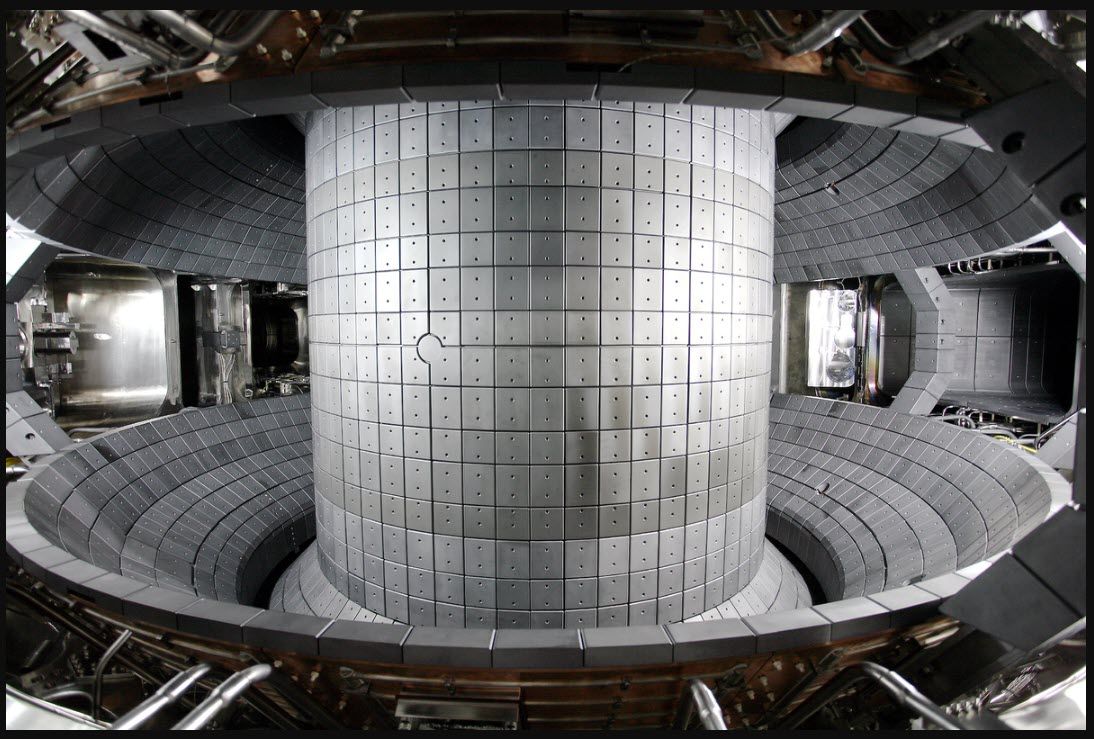The translucent orange cubes, swaying under the bright lights, look like candy. Something like jelly candy or Turkish delight (a typical Turkish dessert made of cornstarch and sugar).
If it weren’t for the green leaves among them, I’d be tempted to put one in my mouth.
“We often have to remind visitors not to eat them,” says research technician Maddalena Salvaglio.
The cubes are made of hydrogel, a material with a lattice structure that retains liquids. It is mostly used in medical devices and diapers.
But here, in the Plant Formation Laboratory at Imperial College London, Salvalio and researcher Giovanni Senna are using the material to change the future of vertical farming.
The secret to this new approach is to place electrodes on the sides of the cubes.
The study is part of a trend that began two decades ago to incentivize farming by using electricity in seeds, crops and soil.
This issue has become so important that institutions such as the National Science Foundation (NSF) in the United States allocate millions of dollars to study how cold plasma It can be used in agriculture, in the form of rays emitted in rooms with controlled temperatures.
The proliferation of new ventures might sound all too familiar to practitioners of weird 19th-century mania: electric cultureIt is a technique whereby electricity is applied to plants to make them produce better flowers, leaves and fruit, or even rid them of pests – with mixed results.
The new generation of researchers eschews the word “electroculture,” preferring terms such as “smart agriculture” or “the fourth agricultural revolution.”
However, the underlying mechanism remains the same, and proponents are united in the conviction that after centuries without results, the application of electricity to plants is finally ready to bear fruit.
The hope is that these future systems can be used to address the global food crisis by reducing the environmental consequences of large-scale agriculture.
According to 2005 estimates, globally, The various components of agriculture can contribute between 10% and 12% of greenhouse gas emissions annually.
The production of synthetic fertilizers from the energy-intensive Haber-Bosch process, which revolutionized agriculture in the early 20th century, is responsible for hundreds of millions of tons of carbon dioxide annually.
Soil erosion from unregulated land use adds more.
This is why many researchers in the new wave of electric farming believe that this technology can play a role in improving food production.
To increase productivity, some scientists are turning to inventions inspired by the “electrophysiometer,” invented by a French physicist in the 1780s.
It was a kind of lightning rod that supplied atmospheric electricity to crops, and this often had undesirable consequences.
And in the United States, many organizations are trying to revive the artificial lightning approach.
However, when the ancient electricians centuries ago first tried to reap the benefits, only their questionable anecdotal results supported the implementation of this method. They were as likely to harm the plants as they were to encourage them.
But since the last century it has become possible to apply these rays more precisely.
This is done through Plasma, a substance generated in nature by lightning, is extremely hotUsually several million degrees, it turns into some kind of ionized gas. New technologies allow it to be handled at room temperature.
When this happens, it is known as cold plasma. Its use is ‘a very active area [na agricultura] “Right now,” says Jose Lopez, a professor at Seton Hall University and director of the Plasma Physics Program at the US National Science Foundation.
They, along with Alexander Volkov, a biochemist at Oakwood University in Alabama, are among those who have embraced the growing trend of applying cold plasma to tiny seeds in a variety of ways.
Volkov noted in his experiments Yield increases from 20% to 75% depending on the plant.
“We increased cabbage production by 75%. And it was tastier too.” He says the taste was sweeter.
These scholars are not alone.
Numerous studies point to a variety of benefits that plasma brings to crops, from helping plants grow faster and larger, to better pest resistance.
“The plasma works by awakening the seed, as far as we know,” Lopez explains.
When the seed germinates, the new plant is more vulnerable to a wide range of environmental “stresses”. As a result, she refuses to open up until she is “happy” with her surroundings.
Accelerating this process has long been standard practice in agriculture, although it has usually been achieved through chemical means such as acids. Plasma seems to do the same thing, but more effectively.
“It penetrates the wall of the seed, and when you plant those seeds, they have a greater ability to absorb water and soil,” says Lopez.
“After treating them for just a few seconds, the plant grows faster than untreated seeds.”
The plasma appears to revitalize plants that have already grown, says Lopez, whose group at NSF used a tiny tool called a plasma pen to treat basil plants.
It became stronger and healthier, and the plant mass and height increased by 20%.
“The results are amazing,” says Lopez.
While scientists are still not entirely sure how this works, particularly in terms of the interaction between electricity and entire plants, there are currently several NSF-funded initiatives to investigate this.
This uncertainty explains why the use of electricity in agriculture is questionable.
Skeptics point out that 200 years after the early Victorians unsuccessfully electrified their plants, how electricity interacts with plant biology remains unclear.
“We’ve known for decades that electric fields improve plant growth,” says Senna, from the Plant Formation Laboratory at Imperial College London.
The problem is that this data is not fully reproduced.; Experiments were carried out under different conditions.
But to turn this electrical interference on plants into a technologically sound way, it is helpful to understand its basic science.
Unraveling the molecular mechanism of a plant’s response to an electric field is the core of the work being done by Senna’s group at Imperial College.
Among other things, they focused on studying the electrical signals that plants generate internally.
These organisms send numerous signals at every stage of development and in every part of their anatomy, which can be measured with various instruments.
Identifying these markers can help scientists figure out what a plant needs, whether that be water, pest control, food or even soil, at each stage of its life.
And unlike other needs, you can’t just produce more land.
For a long time, the best solution to this problem was the promise of vertical farming, which would allow crops to grow on any surface.
There’s only one problem, says Cena. What we call vertical farming is somewhat of a misnomer. We do not grow plants vertically; We stack narrow horizontal growth boxes vertically on top of each other.
This is because the roots are not vertical. The roots are subject to the law of gravity. They are looking for water, looking for the “bottom”.
And that’s why, by the way, it’s so hard to grow plants with many roots in space. Without gravity, the roots roam everywhere, making it logistically difficult to feed them properly.
What if vertical farming literally did what its name says? What if it were possible to grow fruits and trees whose roots extend all the way up rather than down?
Roots grow downward because the organism senses the pull of the gravitational field and the presence of water and coordinates its tissues to follow this direction.
However, this is not all that the roots can feel. They can also feel electric fields, a sensation that can override other senses.
The electric field has a veto over the roots’ response to a gravitational field.
Last year, Salvalho and Senna showed for the first time, in fine molecular detail, How to use precise doses of electricity to make Arabidopsis redirect its root growth.
In other words, they made the roots grow as they wanted them to grow.
Hence those delicious looking cubes.
Salvalio and Senna have partnered with the Dyson School of Design Engineering in London to develop special 3D-printed hydrogel cubes capable of housing growing Arabidopsis plants, and electrodes that will direct their root growth to a sideways position.
The bright green leaves show that the ventilation tunnels have proven to be a brooding environment. Its roots wrap thickly all over.
Salvalio intends to start electrifying applications by the end of this summer (in the northern hemisphere). If all goes well, saying “the sky’s the limit” would be an understatement.
“Being able to control the direction of root growth means we can grow trees on roofs and on walls,” says Senna.
And with this new electrical breakthrough, it will be possible to grow trees in zero-gravity environments.
Perhaps soon there will be trees on the International Space Station or forests on the Moon.
This report has been summarized and edited for clarity. To read the original text in English, Access here.

“Music fanatic. Professional problem solver. Reader. Award-winning tv ninja.”

:strip_icc()/s03.video.glbimg.com/x720/12554906.jpg)




:strip_icc()/i.s3.glbimg.com/v1/AUTH_59edd422c0c84a879bd37670ae4f538a/internal_photos/bs/2023/E/y/gMa5hqQJyQedskwPd3Wg/agricultura-grande-escala.jpg)
More Stories
A watch owned by the richest Titanic passenger was sold at auction for 7.47 million Brazilian reais
Hamas leader says there are no “major problems” with the truce proposal
A woman quits 27 minutes into work after figuring out how to do hotel cleaning